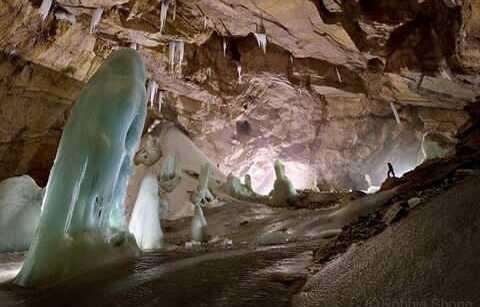Swiss

Mountain regions respond sensitively to climate change. Taking advantage of Alpine caves, a team of scientists led by Swiss Paleoclimatologist Dr. Marc Luetscher from the Swiss Institute for Speleology and Karst Studies (SISKA), is working to understand how permafrost has evolved through time. Ice caves form through a combination of snow intrusion and/or congelation of water infiltrating a karst system. Often up to several centuries old, the climate record of this ice remains largely under-studied. Today we are also able to tell if a cave was an ice cave in the past. This is achieved by looking for cryogenic cave calcites. These form when water enters a cave, and freezes and turns to ice. In this process, the water becomes progressively enriched in ions to the point that it becomes super-saturated and precipitates calcite.
Pictured here is the iconic Snow Volcano Hall inside Schwarzmooskogel Eishöhle, Austria. The chamber filled with giant ice and snow cones is 100m (300ft) wide and over 50m (150ft) high is one of the largest ice filled chambers in Europe. Sadly, in recent years due to climate change, these beautiful ice formations have melted dramatically. Stay tuned for more.